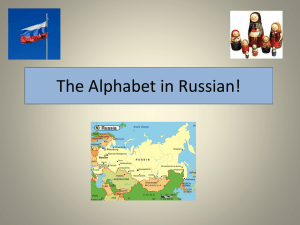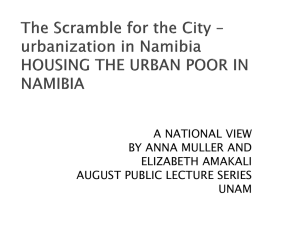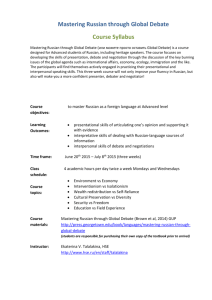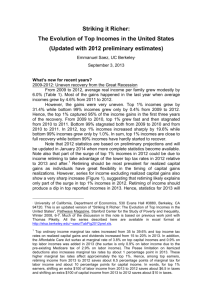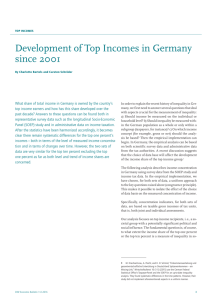Goal of research
advertisement
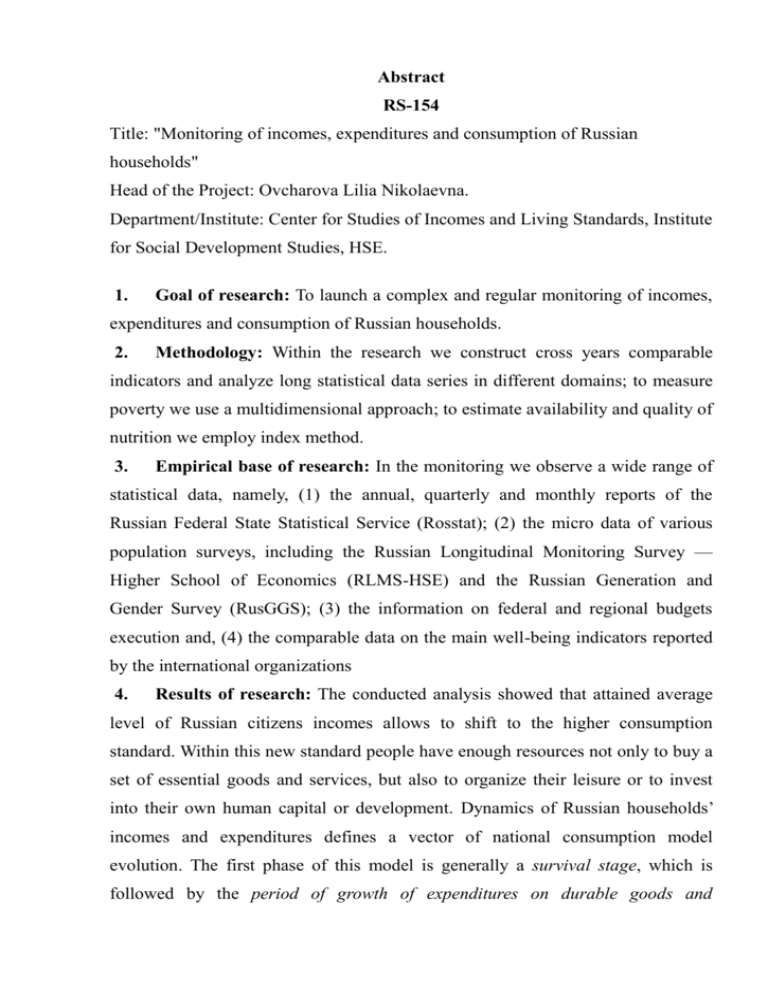
Abstract RS-154 Title: "Monitoring of incomes, expenditures and consumption of Russian households" Head of the Project: Ovcharova Lilia Nikolaevna. Department/Institute: Center for Studies of Incomes and Living Standards, Institute for Social Development Studies, HSE. 1. Goal of research: To launch a complex and regular monitoring of incomes, expenditures and consumption of Russian households. 2. Methodology: Within the research we construct cross years comparable indicators and analyze long statistical data series in different domains; to measure poverty we use a multidimensional approach; to estimate availability and quality of nutrition we employ index method. 3. Empirical base of research: In the monitoring we observe a wide range of statistical data, namely, (1) the annual, quarterly and monthly reports of the Russian Federal State Statistical Service (Rosstat); (2) the micro data of various population surveys, including the Russian Longitudinal Monitoring Survey — Higher School of Economics (RLMS-HSE) and the Russian Generation and Gender Survey (RusGGS); (3) the information on federal and regional budgets execution and, (4) the comparable data on the main well-being indicators reported by the international organizations 4. Results of research: The conducted analysis showed that attained average level of Russian citizens incomes allows to shift to the higher consumption standard. Within this new standard people have enough resources not only to buy a set of essential goods and services, but also to organize their leisure or to invest into their own human capital or development. Dynamics of Russian households’ incomes and expenditures defines a vector of national consumption model evolution. The first phase of this model is generally a survival stage, which is followed by the period of growth of expenditures on durable goods and entertainment, which then develops into the stage of investments into human capital and consumption of services. Still, this trajectory might be temporarily interrupted in the nearest future: the latest dynamics of incomes and consumption statistics captured the first markers of new recession period in Russia. Evaluation of the incomes and poverty dynamics proved that high level of inequality in access to resources persists from the very beginning of the postSoviet period and by the present moment. Still, this inequality does not produce high levels of absolute monetary poverty anymore. Application of different approaches to measure poverty showed that the most vulnerable groups in terms of monetary poverty are children aged 0-15, jobless individuals and rural citizens, and in terms of deprivations and self-perceived poverty those are pensioners. The nutrition questions formed separate topic for monitoring in the project. Integral nutrition index uncovered high spread of unsatisfactory nutrition by selfestimation, which appears, first of all, due to low level of disposable incomes. Poor households with unsatisfactory nutrition level were mostly presented by urban families with children. Finally, classification of the budget accounts data worked out in the research let us reveal weak points of the existing social security system. Specifically, we proved that present set of social benefits for children is strongly unbalanced in the view of family life cycle. That is, practically all benefits aim to support families at the moment of childbirth or right after it. Aside from this, benefits based on the needs assessment procedures still make up only very moderate segment of the Russian social security system. Moreover, statistical data available proves some of them to be inefficient for the poor. 5. Implementation of the results: The bulletins published on the HSE web- site on the monitoring page are designed for the wide range of readers both from academic and nonacademic circles. Our results may be particularly useful for decision-makers and should be taken into consideration while working up new social, tax or economic policy measures or while evaluating efficiency of the existing ones.



